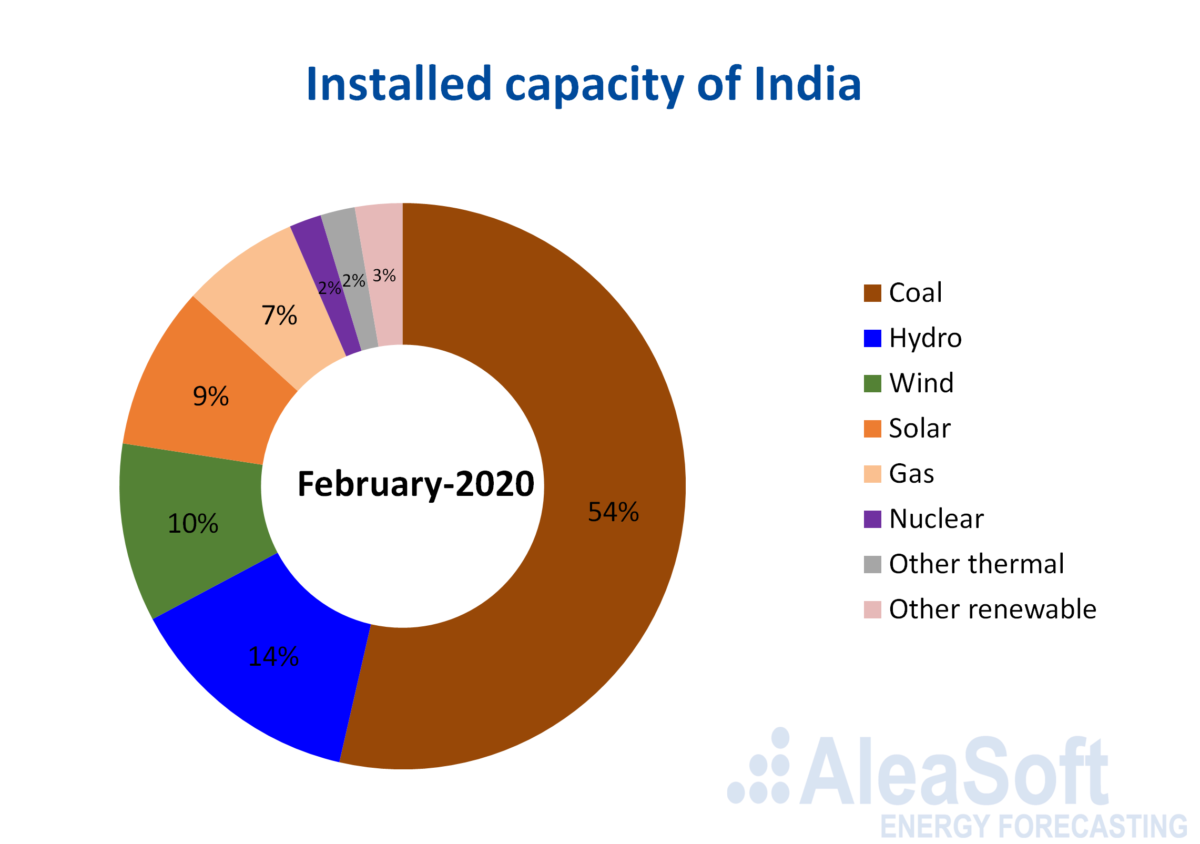AleaSoft collaborates with Power Grid Corporation of India, as a provider of solar and wind energy forecasting. PGCIL is India’s Central Transmission Utility (CTU) and the country’s largest electricity power transmission company.
AleaSoft offers to Power Grid generation forecasting for wind and solar power stations in the short term, including forecasts for next week, next days and next hours, with several granularities. At the moment, the stations from which AleaSoft obtains forecasts are located in the states Tamil Nadu, Karnataka and Andhra Pradesh in the South region and Gujarat, Maharashtra and Madhya Pradesh in the West region.
AleaSoft, together with other providers, has been supplying solar and wind forecasting services for the Renewable Energy Management Centers (REMC) of India since January 2020, after a year of testing and calibration of the forecasting models.
The electricity system of India is divided into five regions: North, Northeast, East, West and South. The integration of these regions is carried out by the system operator, National Grid, which is operated and maintained by Power Grid Corporation of India. The electricity system is interconnected with Bhutan, Bangladesh, Myanmar and Nepal.
India’s electricity generation park is largely thermal. Taking into account the data available up to February 29 of this year, out of the 369 GW installed, 62% correspond to thermal generation, which includes coal, lignite, gas and diesel. Coal occupies the first place in terms of installed capacity in the country, with 54% of the total.
The renewable energies represent 36% of the generation park in India, with the hydroelectric energy in first position. The large hydroelectric and small hydro power plants together constitute 14% of the installed capacity in the country. In fact, this technology occupies the second position in terms of installed capacity in the Indian mix.
The wind and solar energies rank third and fourth respectively, in terms of installed capacity. The wind energy, with 38 GW installed, represents 10% of all installed capacity, and the solar energy constitutes 9.3%, with 34 GW.
The objectives of the Government of India regarding the development of renewable energy are ambitious. According to the National Electricity Plan (NEP), the goal is to increase the renewable capacity to 175 GW by 2022, an amount that does not include the large hydroelectric capacity. Currently, the renewable capacity without including the large hydroelectric is 87 GW. Specifically, it is expected that the solar energy capacity in that year will reach 100 GW and the wind energy capacity 60 GW. By 2027, the target is to reach 275 GW of renewable capacity.






